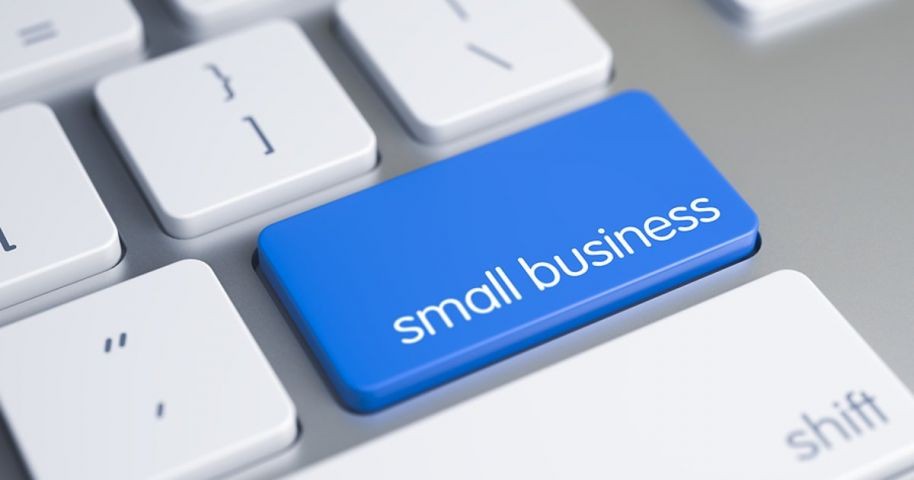Hasn’t it been an interesting year? A fractious election season is looming, schools are still online, and storefront businesses large and small are dealing with the changes wrought by the COVID-19 pandemic.
Just a few short months ago there were completely different problems, such as how to attract the best talent to your company.
What hasn’t changed is competition. That’s why businesses still need to pay attention to the latest trends affecting their industries. This is particularly true for the smaller business, hit so hard this year by the coronavirus that many didn’t survive the blow. Small companies need to watch everything from small business lending trends to competitor activity to market trends. This article will help you understand what’s trending now, and in the months to come.
What Trends Will Stay the Same from 2020 to 2021
There is admittedly some unpredictability with what lies ahead. For example, we simply do not know how the November election will shake out or even how the current pandemic will affect companies as cold and flu season approaches. However, there are some trends that small businesses can count on into 2021. For example:
- User reviews will matter. If you’re not paying attention to social media user reviews, your business is already behind. You already probably know that today’s consumer is highly informed about the products and services you sell. Did you know 85% of consumers do online research before they make a purchase? One of the most powerful tools you can use to influence their decision-making is the online customer review. There is data that shows 92% of potential customers will not purchase your products if there isn’t a review online. (You can imagine what this number looks like if your reviews are negative!) Having a starred online rating with customer comments is critical to any business, but for the small business, the customer review process should be particularly attractive as a marketing tool because of its low cost. Online reviews cost you exactly nothing on sites like Yahoo!, Yelp, or Google My Business. The traffic is high on these sites and it does a lot to help you build trust and your reputation without spending money on paid advertising. It’s for all these reasons that this trend isn’t going away anytime soon.
- Small business funding will still be a necessity. Whether your goal is to move your business, add staff, increase marketing spend, or invest in e-commerce, small business lending will continue to be a go-to resource for companies in all industries. Alternative cash resources like 401(k) funding are just as important to companies as traditional small business funding. One great piece of news this year is that the current low interest rates are expected to continue into 2021. Better interest rates coupled with the cash infusion from the Paycheck Protection Program this year helped many small businesses get through a difficult time.
- Social media marketing is critical. If your brand isn’t active on social media, you are missing the hottest venue for reaching customers today. One investment to consider is hiring a social media influencer to bring your brand to their ready-made audience. If you’re not familiar with the idea, think of a social media influencer as a celebrity product endorsement. Social media influencers are followed by thousands, sometimes millions of people on these digital channels. If you get the attention (or pay for the attention) of these social media celebrities, they will bring your company to the attention of their followers—and sales usually follow as a result.
- Freelancing will stay hot. In 2018 there were 57.3 million workers engaged in some form of freelancing in the gig economy. Lyft and Uber were two of the first companies to take advantage of a fully freelance workforce. Technology innovation allowed these workers to take advantage of side hustle jobs or full-time freelancing to drive their income levels and control their schedules. Since COVID-19, some of these workers have seen an increase in productivity, like food service or grocery delivery, while others (like ride-sharing services) have taken a financial hit. Understanding the trend of a chosen business model is important to consider for small business owners seeking to hire workers. For small businesses, the freelance economy allows them to hire workers for an hourly or gig-based wage without the overhead of benefits. It’s a win-win for workers seeking a second income and for businesses feeling cautious about expanding in the current economy.
While these trends may not be anything new, there are just as many changes to the small business landscape these days that you should be watching.
What Trends Will Change from 2020 to 2021
2020 may go down as one of the most challenging years since the Great Depression for some small business owners. But with the challenges also come some interesting and potentially innovative changes to businesses that could be viewed as opportunities.
- Remote work is the future of work. Even the most reluctant small business owner is now a convert; remote work is the future of work. While the trend was gradually increasing, the pandemic certainly nudged the numbers up; by June 2020, 42% of the American workforce was fully remote. The stigma that employers once felt—chiefly centered in distrust that a work-from-home employee did anything but the dishes when not on-site—seems to be gone. This distrust wasn’t rooted in reality, in any case. A two-year Stanford study showed that employees are more (and in most cases, much more) productive than your on-site workers. This trend for small business owners will have a ripple effect that you’ll see in the next few bullets.
- Mobile-first communication will become the standard. From communicating with your millennial workforce to reaching your at-home worker, communication is now centered around mobile technologies. This affects small business owners in a few ways. First, your website must be responsive, which means that the size changes to fit the screen on which it’s being viewed. Second, many of your job applicants will now apply directly from their smartphone, so if your application process doesn’t accommodate this trend, you’ll lose the best workers to your competitor. Too, don’t be shocked when a new employee fails to respond to your email. That’s just because email is so year 2000; you need to text them to get their attention. Three, read that last line again and apply it to your customer base.
- E-commerce and storefront are the one-two punch to score some knockout revenues. It’s true that the work-from-home trend may cause some problems with your storefront, depending on its location. Stanford University suggests the “Growth of city centers are going to stall.” This makes sense if your business was reliant on foot traffic from downtown workers. But many small businesses have found delivery workarounds to keep themselves going. In the meantime, Stanford looks at this as an opportunity to build your business in the suburbs. To shore up the storefront, it’s a logical time to invest in e-commerce options. While fulfillment can be a difficult challenge, Amazon fulfillment has become a go-to option for the small business owner seeking to maximize e-commerce efforts. In the next five years, 74% of brands are expected to show up on the Amazon platform.
- Go cashless. Most predictions say that the economy is destined to go cashless in the near future. Digital pay is convenient and secure, and companies like Google Pay, Apple Pay, and PayPal offer businesses a way to reap the benefits of selling products in a touchless environment. Across Europe, this trend has grown, and the studies show that only four in 10 millennials carry any cash at all on a regular basis. While e-commerce obviously lends itself to the digital payment, at least having a cashless payment option beyond a credit card terminal isn’t a bad idea for your business. While we may never go fully cash-free, keeping your options open in this area is a good idea.
- Sustainability is a big issue. If you haven’t been paying attention to this trend, now is the time. While the first part of 2020 may have had you scrambling more to put products on your digital or storefront shelves, your focus now should shift back to going green whenever possible in your business. Customer pressure to increase global sustainability from reducing reliance on single-use plastics to cutting carbon emissions is high and the research shows the pandemic only increased awareness around this issue. A recent survey showed 90% of consumers said they were equally or more concerned about environmental issues after the pandemic than before. Your customers are worried about the environment and your brand’s impact matters. Make changes now, publicize your efforts on social media and your website, and reap the benefits of more customers in 2021.

Small companies across the United States have struggled with the impact of COVID-19 on their businesses. It’s been an uncertain time, and there are new trends and existing ones that will impact your business in the coming months. Isn’t it good to know you have a partner like Benetrends still on your side for small business funding and more to help you weather the storms ahead? Our company has been around for decades, and we have a strong track record of helping entrepreneurs secure small business lending and partnering with vendors to help with all your company’s needs, from payroll and HR to legal services and more. Our goal is to be with you for the life of your business. Schedule a consultation today.


